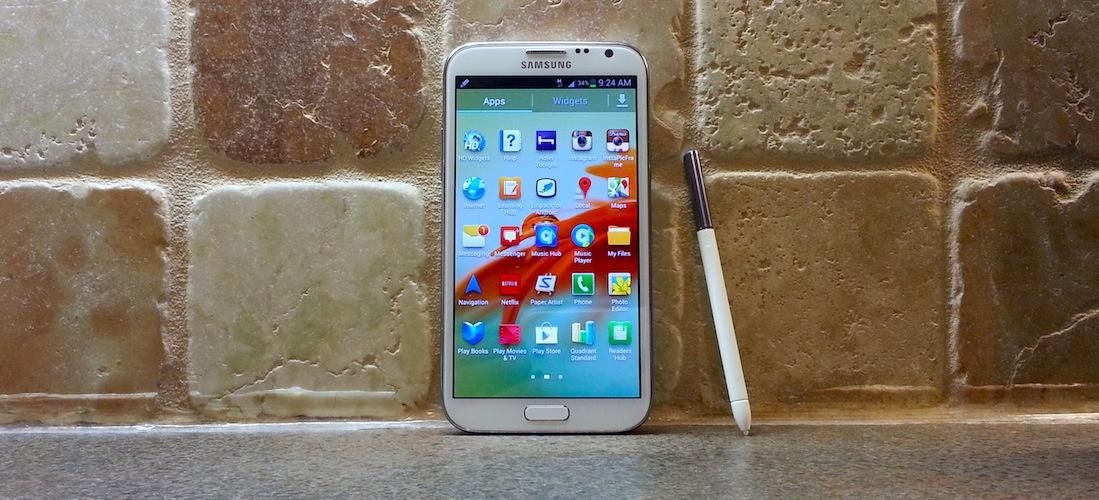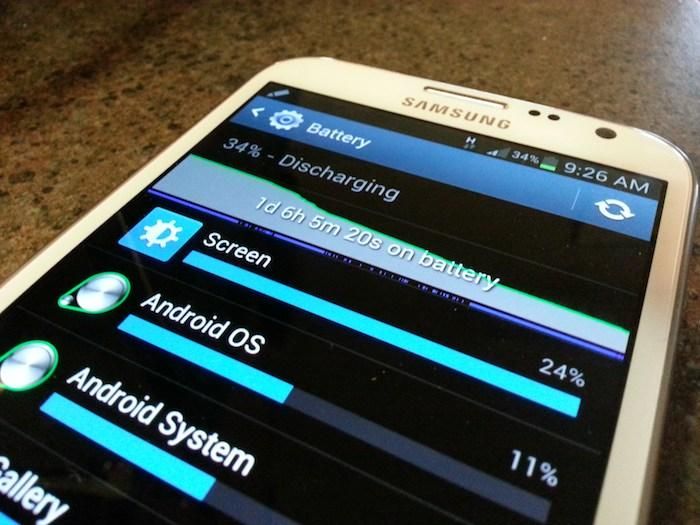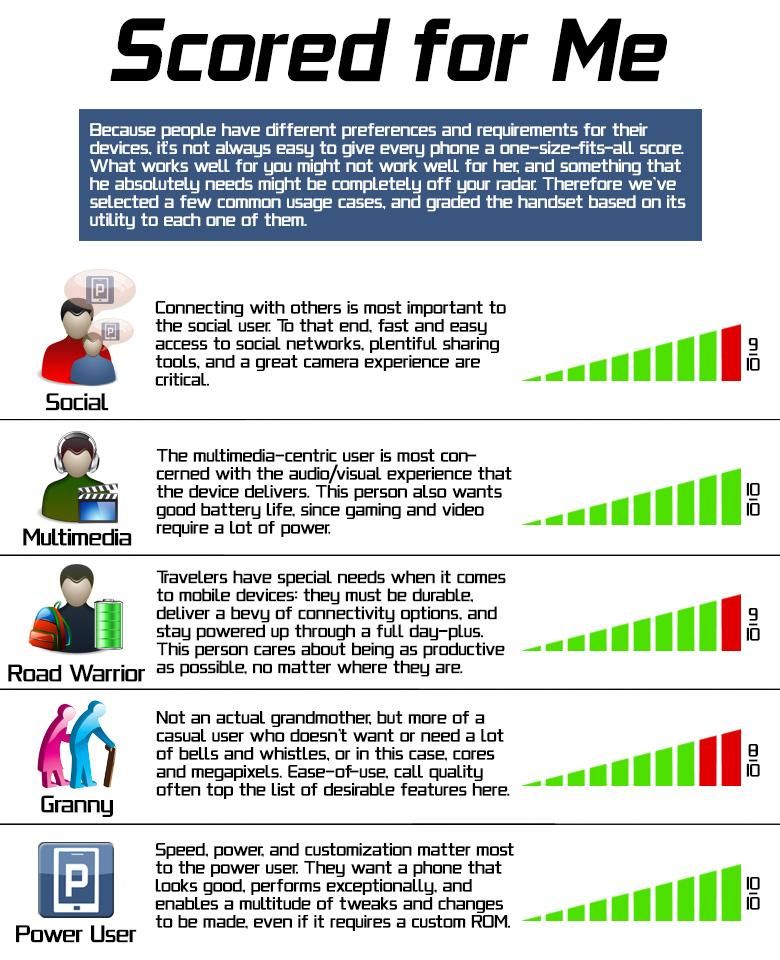"Is it a phone? Is it a tablet? It's Galaxy Note!"
So read the quote that kicked off the ad campaign surrounding the original Galaxy Note, the 5.3-inch hybrid device Samsung unveiled last year. Like many Samsung ad slogans, this one was a tad inaccessible, but at least the first two-thirds of it accurately stated the question a lot of us were asking: was the product a smartphone or was it a tablet? And furthermore, what place did it have in the market? What exactly did "it's Galaxy Note" mean?
To the surprise of some -and the delight of Samsung, no doubt- those questions didn't keep the original Galaxy Note from skyrocketing to success. As of August, Samsung had sold 10 million units worldwide, proving that "phablets" did indeed have a place in consumers' hearts and pockets. Before long, the company had single-handedly carved out a new category in mobile computing devices, and went on to expand the Note brand to include devices in other categories as well. A follow-on phablet seemed assured.
The Galaxy Note II is that device. We first got our hands on it at this year's IFA, and we've just wrapped up a solid week of testing our own review unit here in the States. We've editorialized on its hybrid nature, waxed poetic in video demos of its features, and even podcasted at length about this new kid on the phablet block. So, does the new smartphone/tablet live up to the high bar set by its predecessor? Grab your favorite beverage, put your feet up, and read on to find out.
Video Review
Performance
There's a lot of power humming along inside the Galaxy Note II, with that 1.6GHz Exynos 4412 Quad delivering some very impressive performance on paper.
That's mirrored -mostly- in daily use. The able processor combined with the refined software of Android Jelly Bean makes for a very reliable, fluid experience. We were already impressed by the fluidity and stability of TouchWiz Nature UX on earlier builds of Android, so the jump to Jelly Bean hasn't been a revolutionary one, but overall the software has performed up to standard.
But there is something worth mentioning. We're not sure if it's our lingering doubts about Cortex versus Krait processor architecture or something else, but we're pretty sure we can discern a bit more lag in the Exynos-powered Galaxy Note II, running the supposedly-more-buttery Jelly Bean, than in the Snapdragon-powered Galaxy S III running Ice Cream Sandwich. It calls to mind a similar performance disparity we noticed between the international and American versions of the HTC One X, with the American dual-core version handily beating out the quad-core model in terms of UI responsiveness. That's an almost identical situation to the one we found in our review of the Sprint Galaxy S III.
It's not much; just the occasional stutter when jumping to the widgets page in the launcher, or during the first few seconds loading two apps into Multi Screen, and it's certainly not a deal breaker by any means. It's still a very responsive device overall; one of the best we've handled, in fact, and the numbers below bear that out. It's just jarring to encounter any lag at all on such a powerful device, and we thought it worth a brief mention. The elite among the power users might perhaps raise an eyebrow at this, but the other 99.5 percent of the planet's population won't notice it at all.
Click for full size.
Battery Life
The Galaxy Note II fiddles with our expectations when it comes to endurance. On the one hand, that big 3100 mAh battery implies a battery life measured in days; on the other, that big 5.5-inch display and LTE-capable radio are huge energy-suckers.
The result isn't quite a draw, as we first thought. Given a few days of "run in," our Galaxy Note II review unit now delivers solid performance, lasting a full day with moderate-to-heavy use. That includes multiple email accounts and several social media apps polling in the background, weather apps checking in, news apps automatically refreshing, GPS usage for navigation, heavy data-based text messaging via Google Voice, and sporadic sessions of heavy browsing while streaming music via Spotify. Given that usage pattern, interspersed with long periods of inactivity, we were able to last more than a day on a single charge.
You'll still want to have a charger nearby if you're a heavy user; this device isn't a miracle worker, and "heavy user" is often synonymous with "phablet owner." That said, you'll probably be forced to plug in a bit less often with the Galaxy Note II than with other devices.
Call Quality/Network Performance
We tested the Galaxy Note II in Greater Boston, New York City, and Eastern Long Island -and the rural areas in between- over the course of about a week. The device used AT&T's HSPA network for the duration of the test period, with no LTE connectivity.
Performance in the reception department seems solid, the device holding onto a signal as well as our Galaxy S III when coverage is present. Fringe areas (Eastern Long Island) and zones of high cell-site loading (NYC) have given us some challenges, but that's not the Galaxy Note II's fault, and the latter problems shouldn't translate to LTE-using customers when compatible American versions of the device are released. We haven't noticed any problems with the HSPA radio in the unit; data speed is excellent when network conditions allow for it. WiFi performance is also good, with reception again average.
Call quality is also quite good, though holding a phablet to one's head is one of the strangest sensations in communications; it doesn't really feel much different, but if you catch your reflection in a mirror, it does look a little absurd. Callers said we sounded fine, even over speakerphone. That last point is where the Galaxy Note II really shines from an audio perspective; the speaker is big, bassy, and loud, especially when the device is playing multimedia files. It's not quite as impressive in phone calls, Samsung having chosen for some reason to crank down the maximum volume when in calling mode, but it's louder than most mobile speakerphones we've encountered. If you're a music-listener with an aversion to headphones, this is the phone for you.
That’s bigger than the speakers in some cars we’ve owned.
Pros
- Huge, brilliant display
- Powerful custom multitasking
- Good battery life
- S Pen useful in various scenarios
- Android Jelly Bean with TouchWiz Nature UX
- Excellent camera
Cons
- Casing material slick and prone to scratches
- S Pen less useful than it could be
- Too large and heavy for some users
- UI lag is slight, but shouldn't exist on such powerful hardware
Pricing and Availability
The Galaxy Note II officially launched on September 26th in South Korea, but will eventually roll out to 128 countries as part of its progressive global unveiling. Right now you can get the unlocked quadband version from Clove Technology. A state-side release is expected soon, with availability on all four U.S. carriers — even T-Mobile USA, which leaked information indicates might be expecting an October 24 launch. Pricing information is not yet available, but we doubt it'll be cheap: prices for unlocked models on Google Shopping search results currently average around $700 for the 16GB version.
Conclusion
Sure, the Dell Streak may have broken the five-inch barrier first, but it took Samsung to make it popular. In every meaningful sense, the original Galaxy Note launched the phablet category, an accomplishment for which it's been rightly praised. But even though it sold millions more than some of us expected, it didn't quite manage to make "phablets" a household name.
Today, the world is different. The Samsung name is stronger than ever before, with its Galaxy and Note sub-brands right out in front on the war for mind share. Given the public's increased awareness of Samsung's products, and the growing tendency of the average consumer to treat the words "Galaxy" and "Android" as synonymous, the Galaxy Note II stands a very good chance of doing something even more significant than its forerunner. It might be the device that catapults phablets to the point of mainstream acceptance. It's going to launch on many more carriers than its predecessor, and we can reasonably assume Samsung will use its advertising resources to full effect. It's going to be everywhere. With high-end smartphones already pushing the 5-inch mark, and the Galaxy Note II's physical proportions not much larger than some of those jumbophones, some people in the market for a specced-out device will no doubt be tempted to make the jump to a phablet.
Based on everything this device offers, the quiet competence with which its software operates, and the solid confidence its massive hardware inspires, justifying that jump is looking easier and easier. With the Galaxy Note II leading the pack, future of the phablet category -and Samsung's dominance of it- has never looked brighter.
Original Galaxy Note sales figure source: The Verge
Galaxy Note II display pixel photo via OLED-Info
Galaxy Note II camera module & launch information source: Engadget 1, 2








